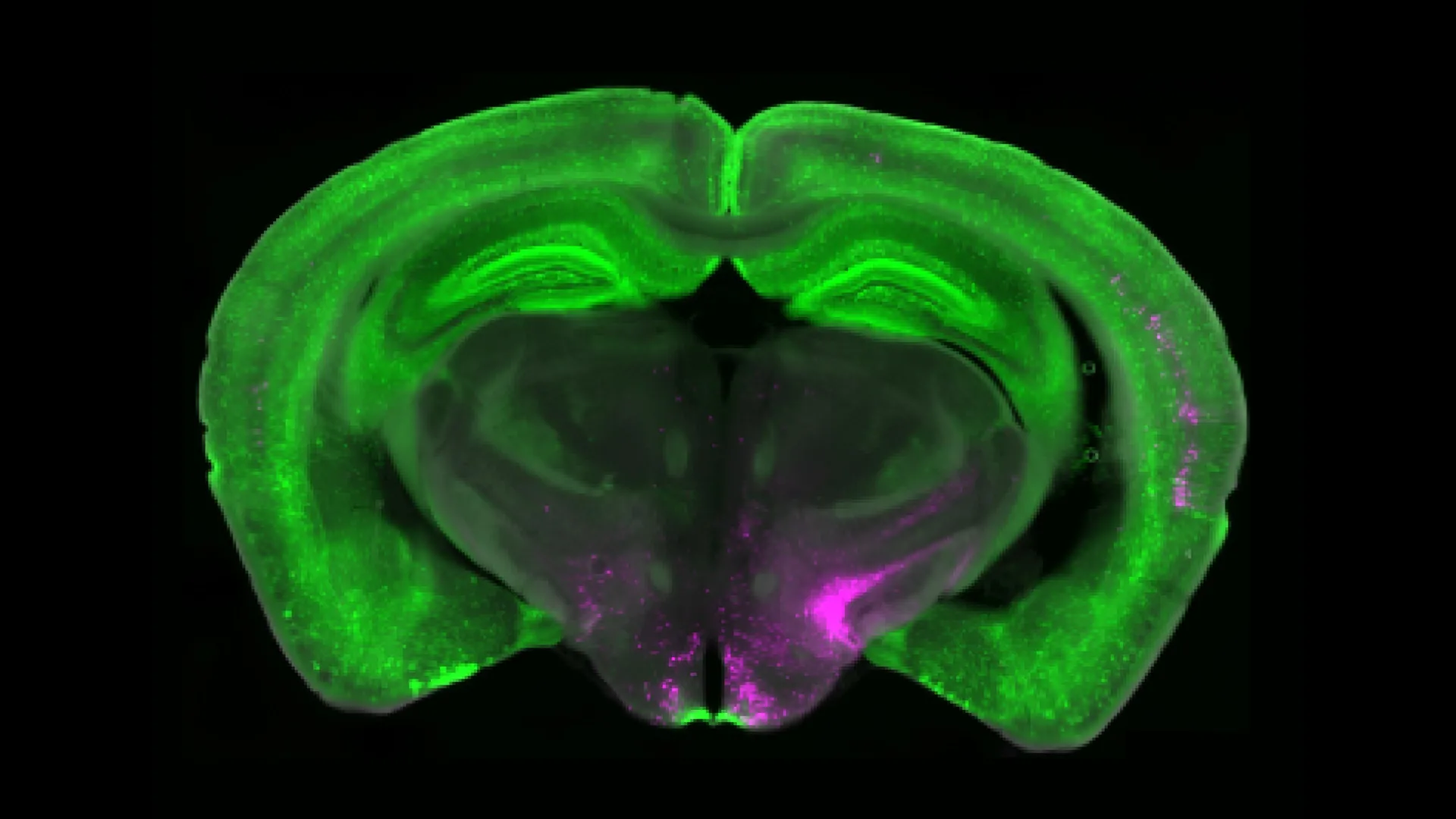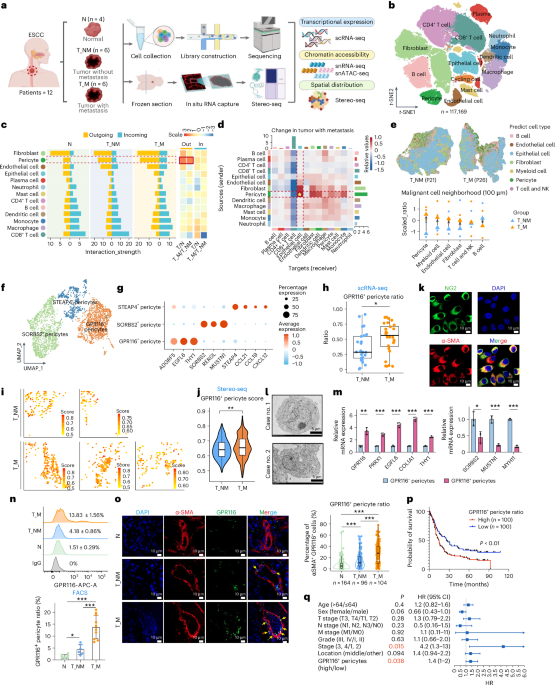The European Space Agency (ESA) has officially completed the construction of its latest deep-space observatory, Plato, marking a crucial step in its mission to discover Earth-like planets beyond our solar system.
The spacecraft, designed to…

The spacecraft, designed to…
Novak Djokovic has raised concerns after delivering a worrying update following multiple incidents in Shanghai.
This week, Djokovic, 38, is looking to win the ATP1000 event in Shanghai, China.
With Carlos Alcaraz deciding to skip the tournament…

CVE-2025-11371, a unauthenticated Local File Inclusion vulnerability in Gladinet CentreStack and Triofox file-sharing and remote access platforms, is being exploited by attackers in the wild.
While Gladinet is aware of the vulnerability…

Williams, J. C. & Mackman, N. Tissue factor in health and disease. Front. Biosci. (Elite Ed) 4(1), 358–372 (2012).
Google Scholar
McDonald, A. G., Yang, K., Roberts, H. R.,…

Pain may be unpleasant, but in most cases it plays a vital, even lifesaving, role. Short bursts of pain act as warning signals that protect us from harm. When you touch a hot pan, stub your toe, or bump your head, your nervous system instantly…

Beijing Dacheng Law Offices, LLP (“大成”) is an independent law firm, and not a member or affiliate of Dentons. 大成 is a partnership law firm organized under the laws of the People’s Republic of China, and is Dentons’ Preferred Law Firm in China, with offices in more than 40 locations throughout China. Dentons Group (a Swiss Verein) (“Dentons”) is a separate international law firm with members and affiliates in more than 160 locations around the world, including Hong Kong SAR, China. For more information, please see dacheng.com/legal-notices or dentons.com/legal-notices.

A dispute in the boardroom of Tata Trusts has shaken the Indian corporate world — and its tremors have reached Delhi.
Tata Trusts is the philanthropic body that controls 66% of Tata Sons — the holding company of Tata Group’s 26 listed companies with a combined market cap of $368 billion.
On Tuesday night, television channels in India broadcast footage of Noel Tata, the chairman of Tata Trusts, meeting with Home Minister Amit Shah at his residence.
Local media reports said Finance Minister Nirmala Sitharaman, Tata Sons Chairman N Chandrasekaran, and trustees Darius Khambatta and Venu Srinivasan were also present at the meeting.
While Tata Sons and Tata Trusts have not issued any official statement on what transpired at the minister’s residence, it is widely reported that a power struggle is brewing inside one of India’s most powerful business empires.
Salt-to-steel conglomerate Tata Group, which also owns iconic brands including Taj Hotels, Jaguar Land Rover and Tetley Tea, is not just a business powerhouse. It also actively supports many government investment directives — its latest being an $11 billion investment in setting up India’s first semiconductor fabrication unit.
In addition, it’s a crucial part of many of the country’s supply chains — it makes Apple iPhones in India, for example — and employs over 1 million people.
A Tata logo in Mumbai, India.
Bloomberg | Bloomberg | Getty Images
So, when the Tata Trusts board meets later Friday for the first time since reports of an internal power struggle first surfaced, many investors — and the government — will hope that the boardroom battle gets resolved.
“One hopes that the trustees see that the underlying philosophy and glide path for the Tata Trusts is to continue its charity efforts and let Tata Sons contribute financially to these efforts,” said Shriram Subramanian, founder of corporate governance research and proxy advisory firm InGovern Research Services.
CNBC has contacted Tata Sons, Tata Trust and India’s Finance Ministry for comment but has yet to hear back.
At the center of the current discord, according to a source, is the fact that Tata Sons is supposed to receive prior approval from Tata Trusts for any major financial investments. The source says this approval is not being sought.
“There is a clause that says any investment Tata Sons makes above INR 100 crore ($11 million) requires the approval of Tata Trustees,” the industry source, speaking on condition of anonymity due to the sensitive nature of the topic, told CNBC. “This has not been the case for several years, and some of the Trustees feel their powers have been reduced.”
This simmering discontent reportedly came to a head last month, when four trustees of the Tata Trust, including Mehli Mistry, opposed the reappointment of trustee Vijay Singh to the Tata Sons board.
Tata Trusts has three seats on the board of Tata Sons.
Following Singh’s ouster, the other two Tata Sons board members opposed Mistry’s appointment to the third seat, according to the industry source.
“As the dominant shareholder, Tata Trusts has the right to nominate directors to Tata Sons board, where one seat currently remains vacant,” Hetal Dalal, president of Mumbai-based Institutional Investor Advisory Services India, which monitors corporate governance and ESG issues, told CNBC.
There is also concern over the extent of influence the Trust seeks to exert over Tata Sons’ capital allocation decisions, according to Dalal. “While such decisions fall squarely within the purview of Tata Sons’ board, misalignment between the board and its principal shareholder [Tata Trusts] does not bode well.”
This is the second time in less than a decade that India’s oldest conglomerate has seen a power battle relating to the influence of Tata Trust over Tata Sons.
The last time was when Tata Sons Chairman Cyrus Mistry was removed from his position unceremoniously in 2016, and replaced by Ratan Tata, then-chairman of Tata Trusts, to also serve as interim chairman of Tata Sons.
Ratan Tata (C) and Cyrus Mistry (R) meet with then-Commerce and Industry Minister Anand Sharma (L) in 2011.
Hindustan Times | Hindustan Times | Getty Images
Days after his removal, Mistry shared a five-page letter with the media, alleging that he had become a “lame duck” chairman due to constant interference of Tata Trusts in the business decisions of Tata Sons.
Tata Sons followed this with an equally detailed press release accusing Mistry of running the business badly and even trying to usurp control of operating companies.
Both sides of the argument denied the other’s allegations.
It’s now been a year since the death of Ratan Tata and three years since Cyrus Mistry died in a car crash, but the debate over the influence of Tata Trusts on Tata Sons has not been put to rest.
“The group must establish a formal mechanism that governs information sharing, board nominations, and the Trusts’ role in influencing capital allocation,” Dalal said.
Another way the issue might be resolved is if the Reserve Bank of India enforces its mandate, which requires Tata Sons to list publicly under its scale-based regulatory framework introduced in 2022.
Tata Sons was required to list by Sept. 30, but the company has been given a temporary leeway by the central bank.
The listing of Tata Sons will deepen the red lines between Tata Trusts and Tata Sons, the industry source told CNBC, adding that after going public, the board of Tata Sons will run the company completely and Tata Trusts will be reduced to “just a shareholder.”
Under the current structure, the chairman of Tata Sons serves as the chairman of all Tata Group companies, while the chairman of Tata Trusts, which holds 66% stake in Tata Sons, can exercise control over the affairs of Tata Sons, including the selection of the chairman, said the source.
“I don’t think the group wants to list Tata Sons — but they will need to find a way to provide an exit to the SP group,” said Dalal.
The Shapoorji Pallonji Group or SP Group owns a stake of just over 18% in Tata Sons, making it its largest private investor. The group is owned by the late Cyrus Mistry’s family and chaired by his brother Shapoor Mistry.
Ties between Shapoorji Pallonji Group and the Tatas run deep, not just business-wise but also personally.
Mehli Mistry is the cousin of Cyrus Mistry, but supported Ratan Tata during the removal of Cyrus as the chairman of the Tata Sons board. Meanwhile, Noel Tata, the current chairman of Tata Trust, is married into the Pallonji Mistry family, which owns SP Group.
SP Group has been seeking an exit from Tata Sons, but has been unable to due to the illiquid nature of its shares.
“They want to sell their shareholdings in Tata Sons to clear their indebtedness,” said Ajay Rotti, founder of regulatory advisory firm Tax Compass, hinting at ongoing debt concerns at SP Group.
Its investment in Tata Sons is sizeable and could rake in billions of dollars; finding a buyer if it were listed would be easier, due to better liquidity.
SP Group’s exit would be a relief for Tata Sons after relations between the two companies soured over Cyrus Mistry’s abrupt dismissal.
But Tata’s concern is that the sale of an 18% stake could leave Tata Sons vulnerable to takeover attempts, adding to their reluctance to list, Tax Compass’ Rotti said.
According to local media reports, Tata Trusts and Tata Sons are in talks to provide a part-exit to SP Group.

A new study published in the International Journal of Retina and Vitreous identified what the authors described as a novel biomarker of tissue hypoxia in patients with branch retinal vein occlusion (BRVO), central retinal vein occlusion (CRVO),…

Google may have to make changes in the UK so people have more choice over which search engine they use, following a landmark decision from the regulator.
The Competition and Markets Authority (CMA) has designated Google with “strategic market status” under a law which came into force in January.
The decision does not mean the regulator has found wrongdoing at this stage.
Instead, it opens the door to what it called “proportionate, targeted interventions” to ensure the market is competitive.
Google has warned against any measures which its says might “inhibit UK innovation and growth.”
The CMA said it expected to begin a consultation on what changes might be introduced later in 2025.
In response to the announcement, Google has attempted to emphasise what it sees as the advantages of the regulatory status quo.
“UK businesses and consumers have been amongst the first to benefit from Google’s innovations, often months before their European counterparts,” Google’s competition boss Oliver Bethell wrote in a blog post.
“As a result, they see significant value: Google Search contributes billions of pounds a year to the UK economy — £118 billion in 2023 alone.
“Many of the ideas for interventions that have been raised in this process would inhibit UK innovation and growth, potentially slowing product launches at a time of profound AI-based innovation.”
The CMA said Google’s market dominance was unquestionable.
“We have found that Google maintains a strategic position in the search and search advertising sector – with more than 90% of searches in the UK taking place on its platform,” CMA digital markets boss Will Hayter said.
“Having taken into account the feedback received following our proposed decision, we have today designated Google’s search services with strategic market status.”
The CMA previously unveiled what it called a “roadmap” of potential measures it could take if Google was found to have significant market status.
It said it could potentially force the tech giant to include “choice screens” which would let users see alternative search providers, as well as giving publishers more control over how their content was used.
It also included what it called “fair principles” for how websites are ranked in search results, and an “effective complaints process” for businesses unhappy about their listing.
The move has been well-received by consumer groups, with Which? policy boss Rocio Concha calling it “an important step”.
“The CMA’s careful evidence gathering makes a compelling argument,” she said.
“Online search is evolving as GenAI tools become more widely used, but the CMA must still act to tackle the harmful dominance Google has now.”

Gerstberger, S., Jiang, Q. & Ganesh, K. Metastasis. Cell 186, 1564–1579 (2023).
Google Scholar
Yang, H., Wang, F., Hallemeier, C. L., Lerut, T. &…